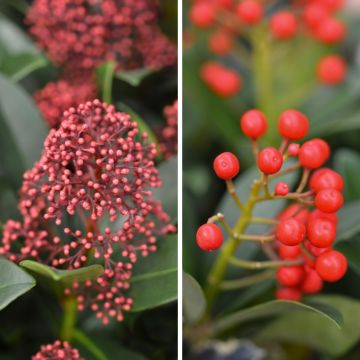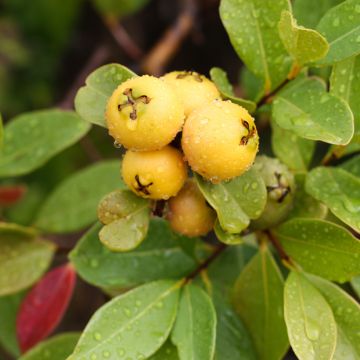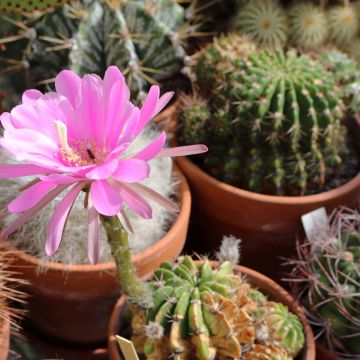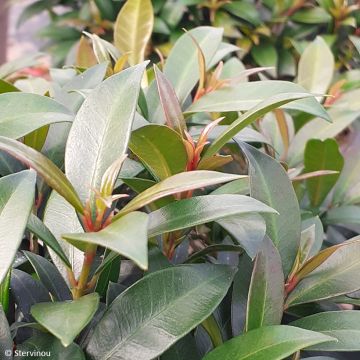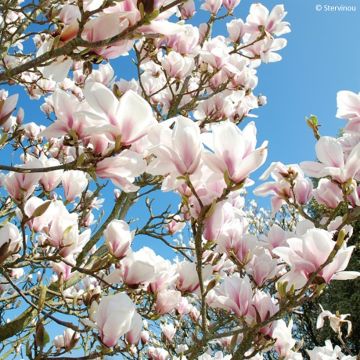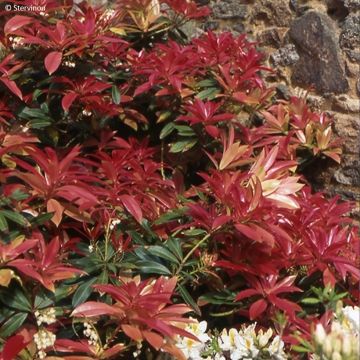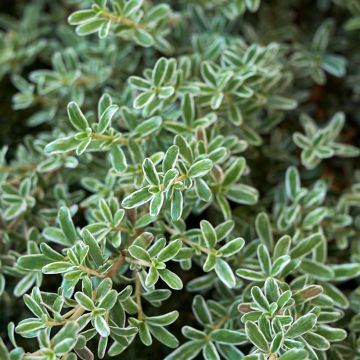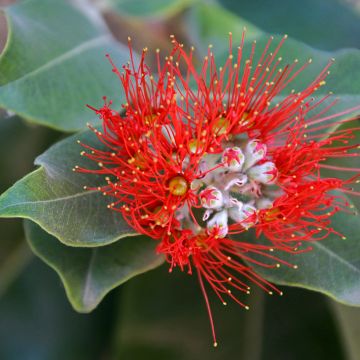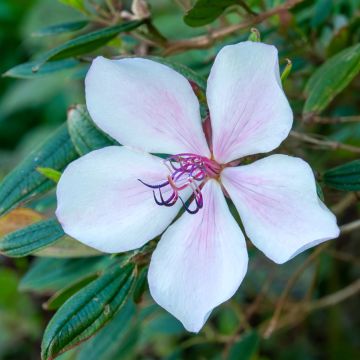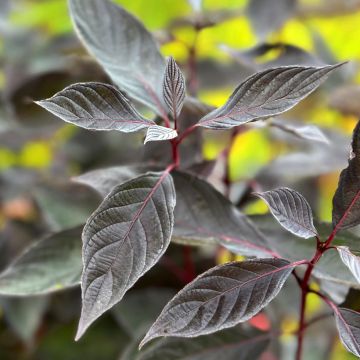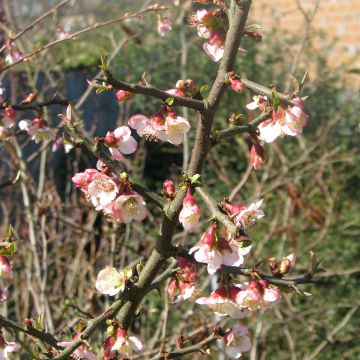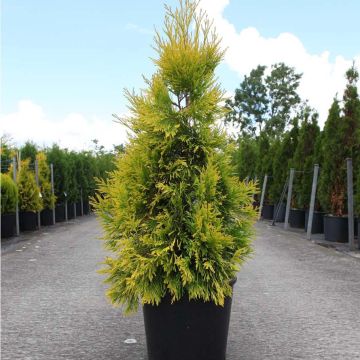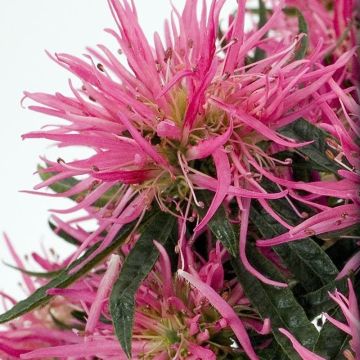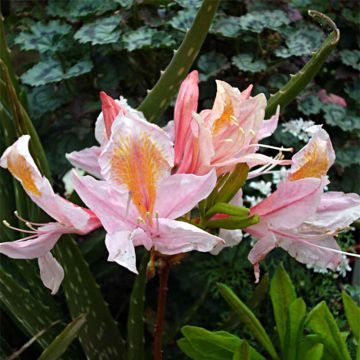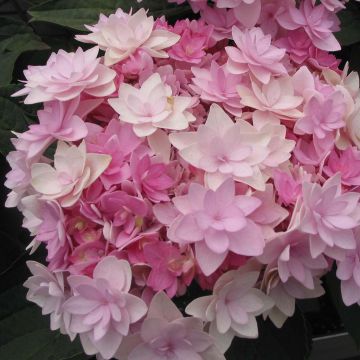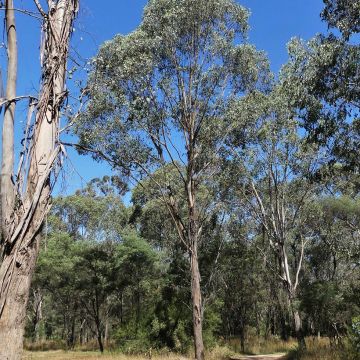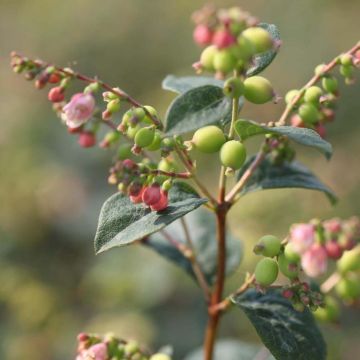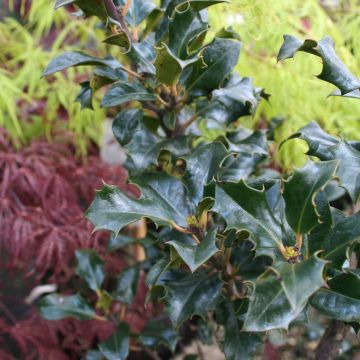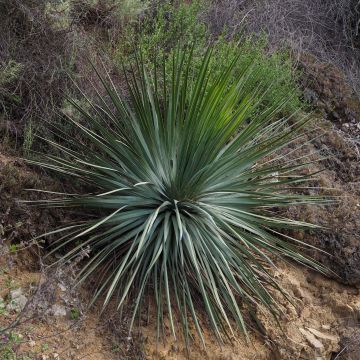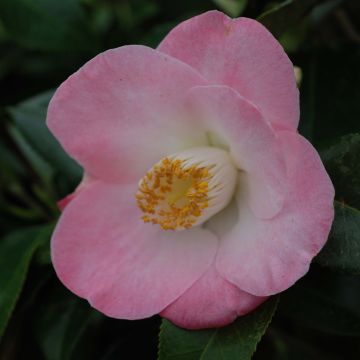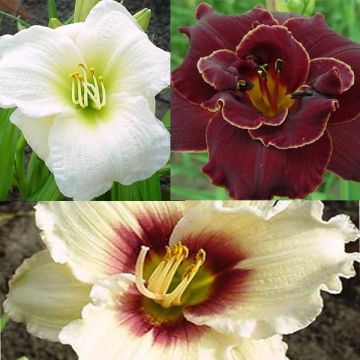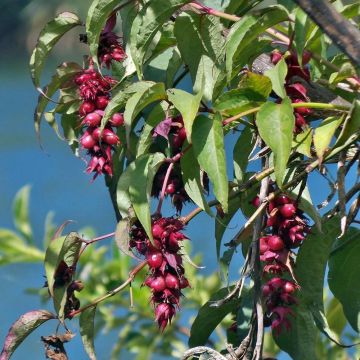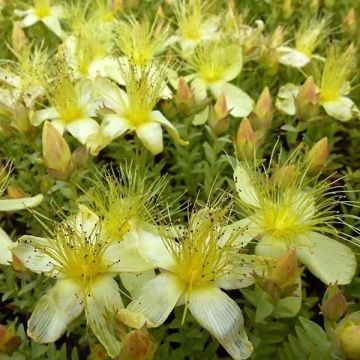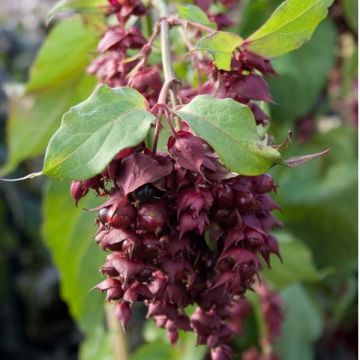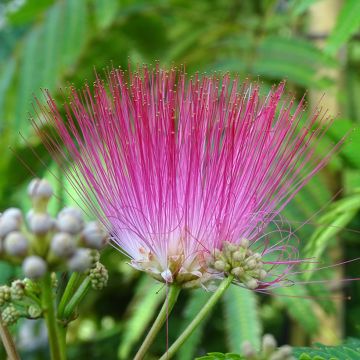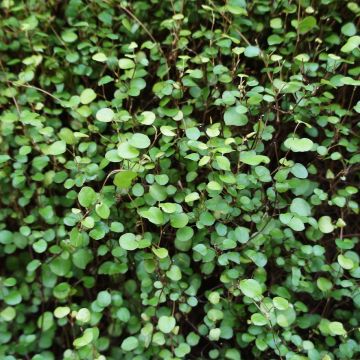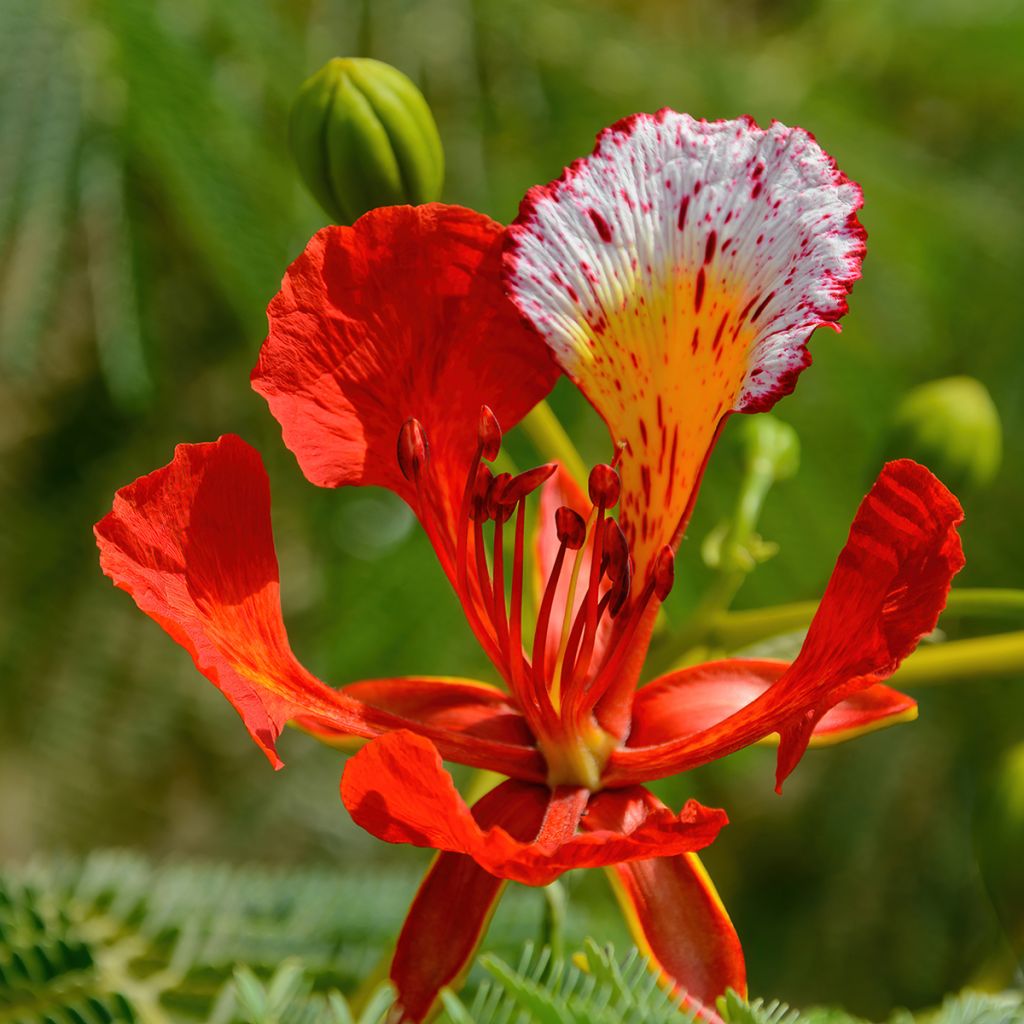

Delonix regia - Flamboyant
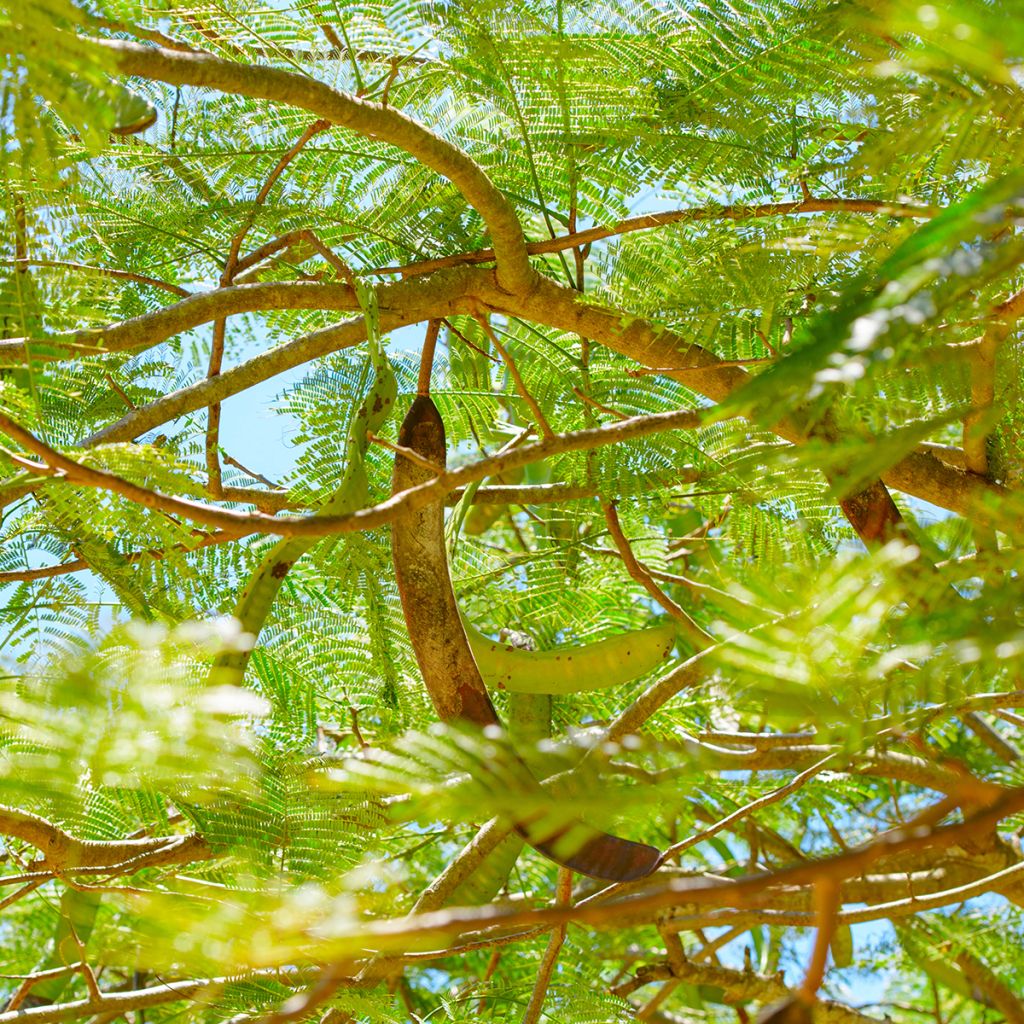

Delonix regia - Flamboyant
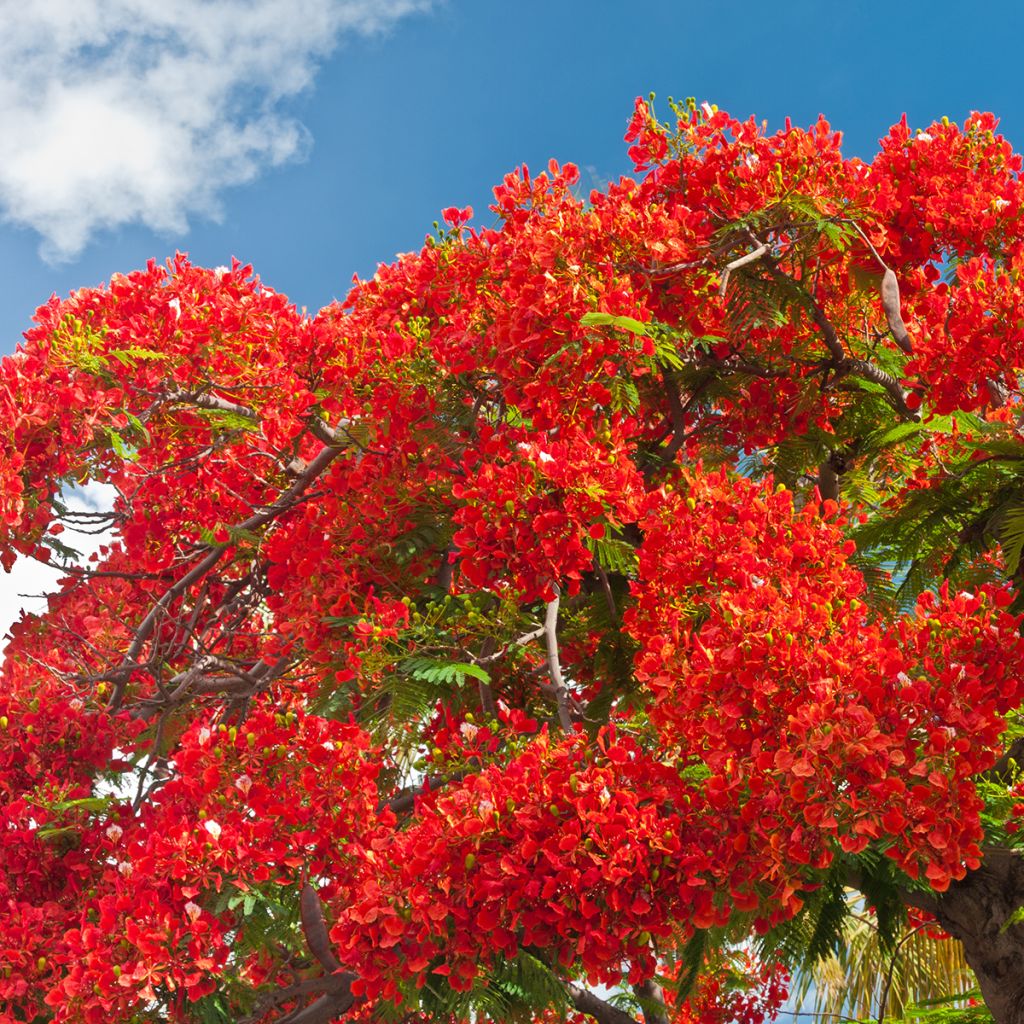

Delonix regia - Flamboyant
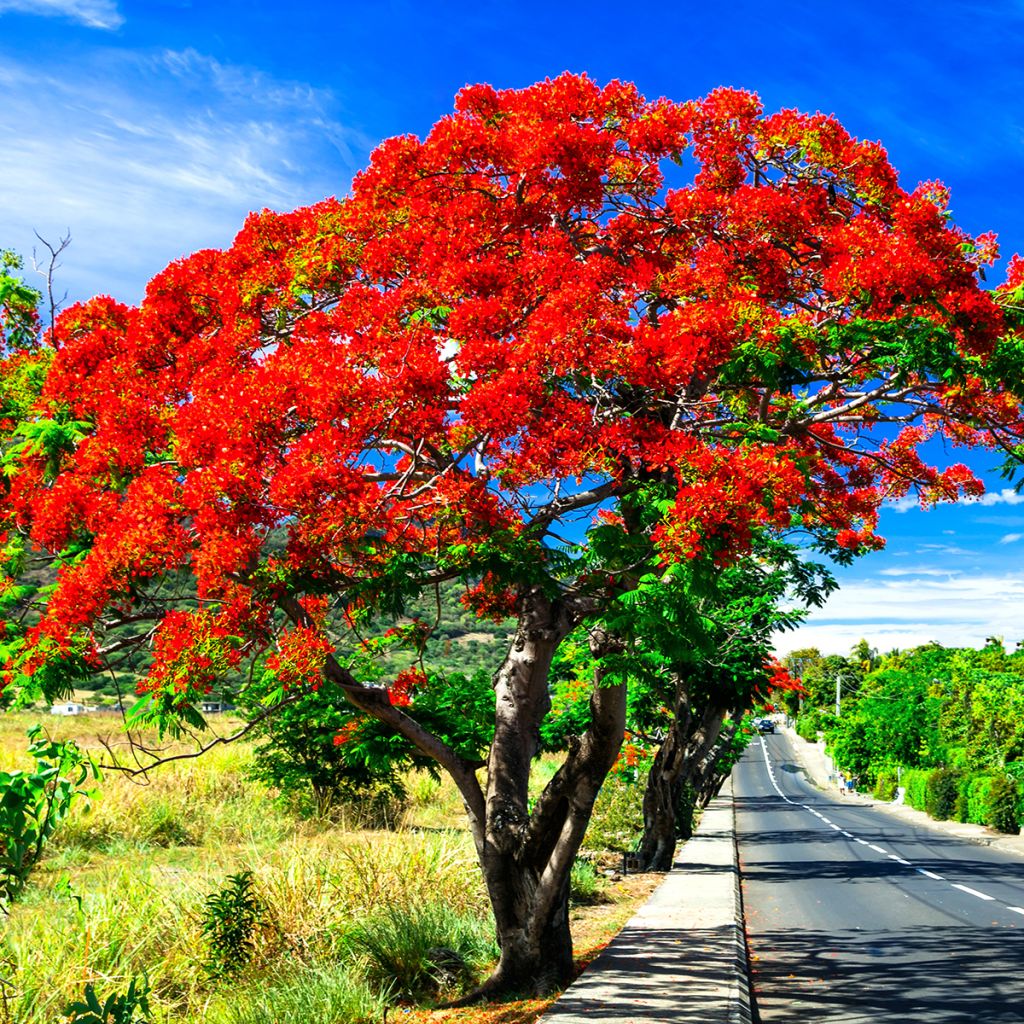

Delonix regia - Flamboyant
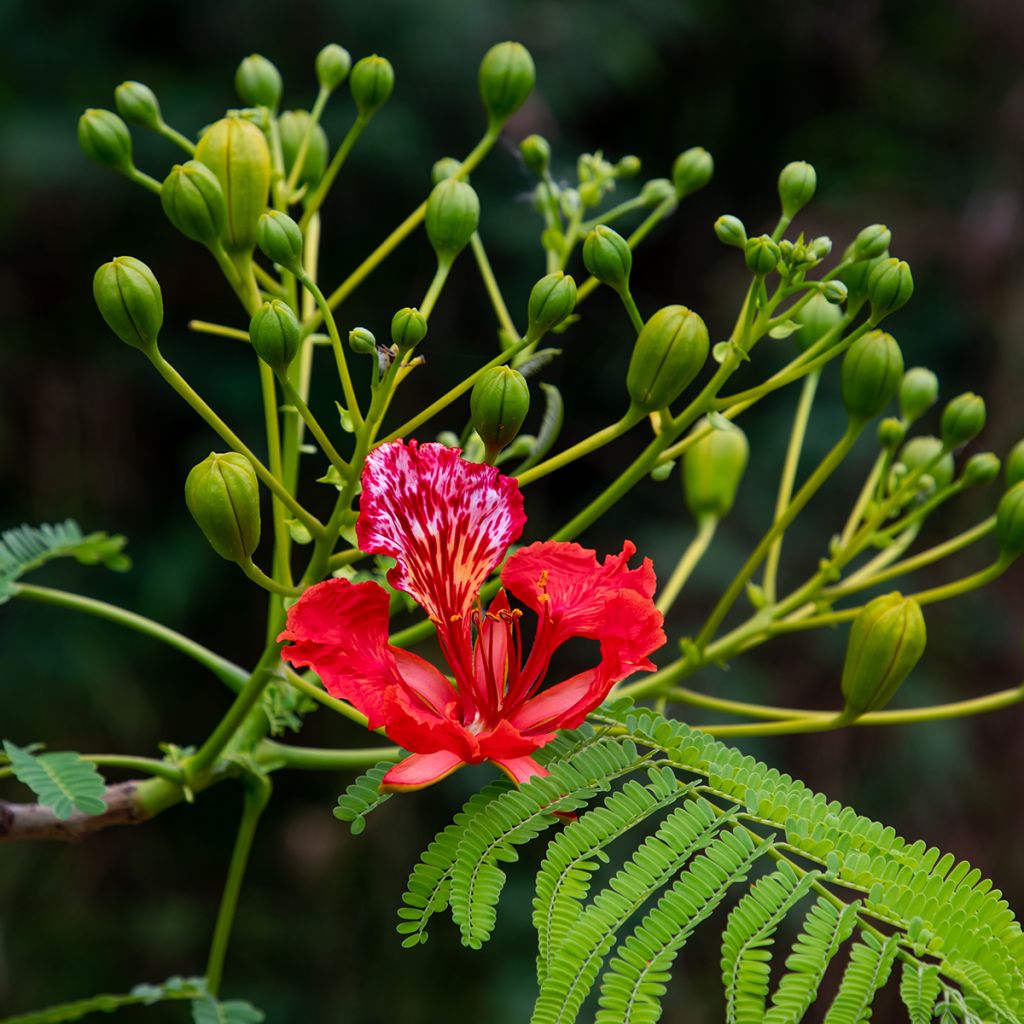

Delonix regia - Flamboyant
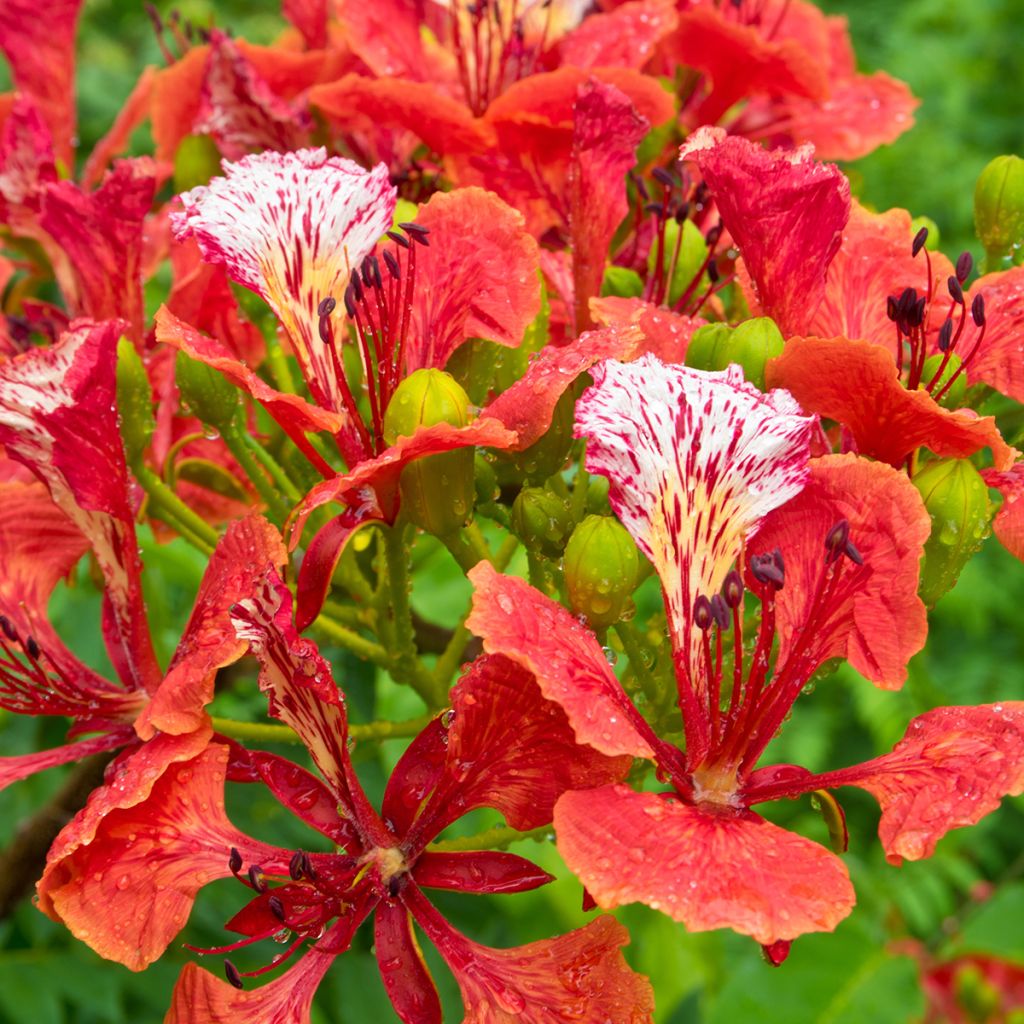

Delonix regia - Flamboyant
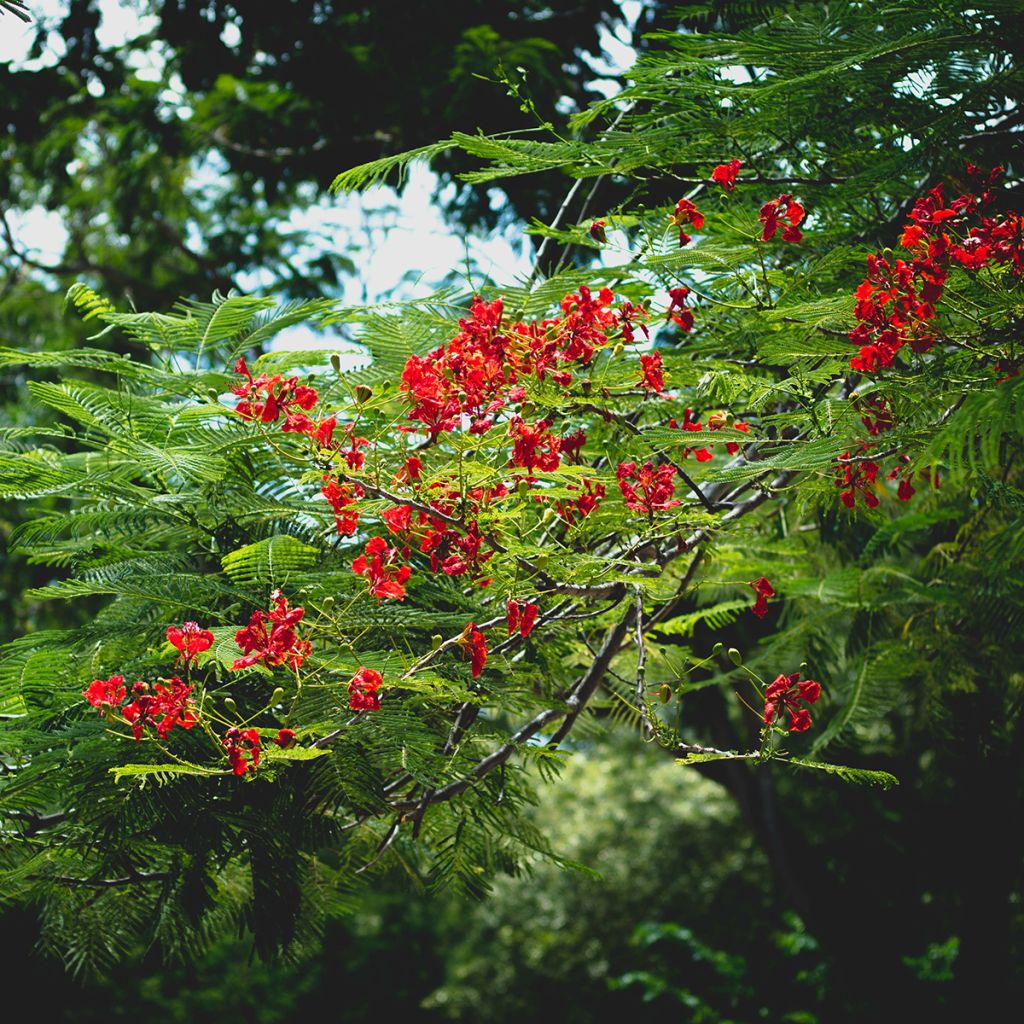

Delonix regia - Flamboyant
Delonix regia
Delonix regia
Flame Tree, Gul Mohur, Mohur, Royal Peacock Flower, Royal Poinciana, Peacock Flower
Why not try an alternative variety in stock?
View all →This plant carries a 24 months recovery warranty
More information
We guarantee the quality of our plants for a full growing cycle, and will replace at our expense any plant that fails to recover under normal climatic and planting conditions.
Does this plant fit my garden?
Set up your Plantfit profile →
Description
The Delonix regia, commonly known as the Flamboyant, is a tropical splendour that all travellers who have had the chance to admire it in bloom cannot forget. The magnificent scarlet flowering that covers the tree's crown rightfully earns it its common name. The large flowers grouped in bouquets have a very graphic shape in addition to their intense colours. The foliage is also very ornamental, composed of long doubly cut leaves, with small leaflets of a fairly dark green colour. Except in areas which are frost-free, it should be grown in containers, in order to be protected from the risk of frost during winter.
The Flamboyant is a tree of the Fabaceae family (formerly Leguminosae), the 3rd largest in terms of number of species (nearly 20,000). This tree is native to Madagascar and has since spread to tropical and equatorial countries, and then to other climates that are warm enough for it to thrive. In the tropics, in the Caribbean or Southeast Asia, it forms large trees up to 15 or 20 m (49 ft 2 in or 65 ft 7 in) tall, with abundant foliage and a very vegetative, sometimes irregular or even ungainly habit. The flowering is magnificent and spread throughout the foliage mass. In warm Mediterranean subtropical climates, such as on the island of Tenerife, where it is frequently planted as a street tree in cities, it is smaller in size, about 5 to 7 or 8 m (23 or 26 ft 2 in) tall and just as wide, and occasionally even more. Its habit is stocky and spreading, with branches of a fairly large diameter, supporting a crown in the shape of a dome that is much less leafy than in the tropics. The flowering is even more prominent, covering the surface of the dome with a curtain of scarlet red or yellow-orange, depending on the variety.
A fully blooming Flamboyant attracts attention from dozens of metres away. It is covered with flattened clusters, or corymbs, composed of large flowers measuring 7 to 10 cm (2.8 to 3.9 in) in diameter, with a corolla formed by 5 petals. Tapered at the base, they then broaden into a spread spatula shape, while the much more discreet sepals form a star with 5 interspersed branches between the petals. The whole vaguely resembles a large snowflake with its very geometric shape. One of the petals is marked with white and a bouquet of 10 stamens emerges from the centre of the corolla. In Madagascar, flowering occurs at the end of the dry season, from November to January. In our latitudes, it extends from June to August.
The foliage is also very structural, consisting of long leaves that can reach 60 cm (23.6 in) in length, of a relatively dark and beautiful green. They are bipinnate, more precisely paripinnate and doubly compound: from the main rachis, around fifteen to twenty lateral secondary rachises emerge, each carrying 20 to 30 pairs of small elliptical leaflets, 8 to 10 mm (0.3 to 0.4 in) long, arranged face to face. This particular arrangement evokes the delicacy of the foliage of certain ferns and creates sublime backlit effects when looking up at the tree.
The trunk, often single in the tropics, can also divide from the base into 2 or 3 main axes which then branch out. The bark is a fairly light grey colour.
It grows in well-drained humus-rich soil, sandy to slightly clayey. It appreciates humidity, but once well rooted, it can tolerate dry periods. It is clearly a tropical plant that cannot withstand frost. When grown in containers, it is even preferable not to wait until the temperature approaches 0°C (32 °F) to move it indoors. A veranda or a cool garage can then accommodate it in winter, provided that the latter is very bright, as it is a sun-loving plant.
The Delonix regia can only be planted outdoors in the mildest areas or in microclimates spared from frost. When grown in containers, it should be pruned every year to limit its growth, which can affect its flowering. One must also be patient, as this tree is known to bloom late, sometimes after 10 years of planting... Where its planting in open ground is attempted, it can be planted with other exotic plants such as the Jacaranda mimosifolia, one of the few trees that can rival it, and is also known as the Blue Flamboyant. The Cassia floribunda, with its bright yellow flowers, is a small bush that can be planted at its base to create a stunning contrast of colours.
Report an error about the product description
Delonix regia in pictures
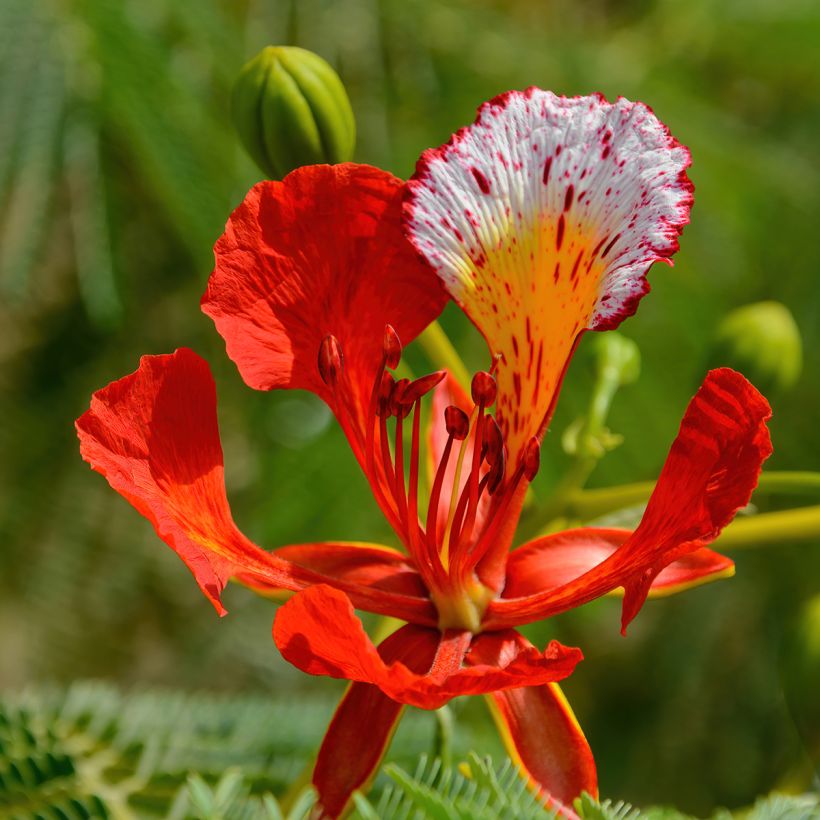

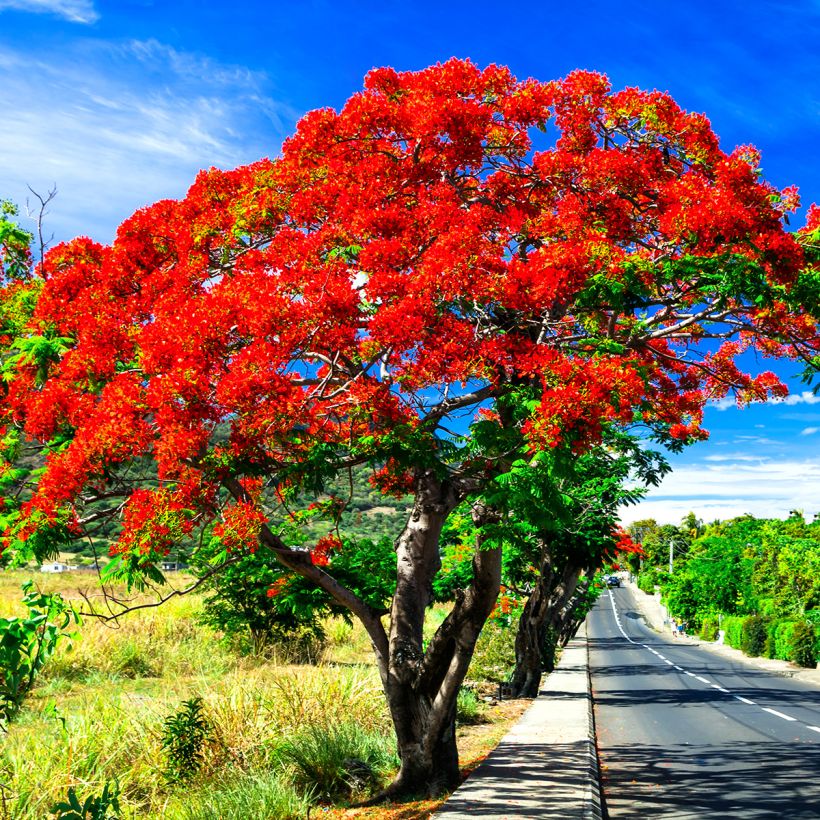

Plant habit
Flowering
Foliage
Botanical data
Delonix
regia
Fabaceae (Caesalpiniaceae)
Flame Tree, Gul Mohur, Mohur, Royal Peacock Flower, Royal Poinciana, Peacock Flower
Madagascar
Other Shrubs A to Z
View all →Planting and care
The Delonix regia is planted in open ground in spring, only in areas where it does not freeze. Therefore, its cultivation in open ground can only be attempted in a few locations on the understanding that it may not withstand the cold in case of frost. Everywhere else, it will need to be grown in a container in order to overwinter it in a cool and bright room. This will allow it to lose its leaves and go into dormancy, which replicates the dry season in the tropics.
It grows in neutral to acidic soil, prefers sand over clay, as it needs good drainage and likes soils rich in organic matter. It obviously needs to be planted in a very sunny location. In a container, it will need regular watering in the summer and very little once brought indoors. Once well rooted in open ground, it tolerates dry conditions which tend to promote flowering. However, summer watering should be provided to allow it to develop well.
Planting period
Intended location
Care
This item has not been reviewed yet - be the first to leave a review about it.
Similar products
Haven't found what you were looking for?
Hardiness is the lowest winter temperature a plant can endure without suffering serious damage or even dying. However, hardiness is affected by location (a sheltered area, such as a patio), protection (winter cover) and soil type (hardiness is improved by well-drained soil).

Photo Sharing Terms & Conditions
In order to encourage gardeners to interact and share their experiences, Promesse de fleurs offers various media enabling content to be uploaded onto its Site - in particular via the ‘Photo sharing’ module.
The User agrees to refrain from:
- Posting any content that is illegal, prejudicial, insulting, racist, inciteful to hatred, revisionist, contrary to public decency, that infringes on privacy or on the privacy rights of third parties, in particular the publicity rights of persons and goods, intellectual property rights, or the right to privacy.
- Submitting content on behalf of a third party;
- Impersonate the identity of a third party and/or publish any personal information about a third party;
In general, the User undertakes to refrain from any unethical behaviour.
All Content (in particular text, comments, files, images, photos, videos, creative works, etc.), which may be subject to property or intellectual property rights, image or other private rights, shall remain the property of the User, subject to the limited rights granted by the terms of the licence granted by Promesse de fleurs as stated below. Users are at liberty to publish or not to publish such Content on the Site, notably via the ‘Photo Sharing’ facility, and accept that this Content shall be made public and freely accessible, notably on the Internet.
Users further acknowledge, undertake to have ,and guarantee that they hold all necessary rights and permissions to publish such material on the Site, in particular with regard to the legislation in force pertaining to any privacy, property, intellectual property, image, or contractual rights, or rights of any other nature. By publishing such Content on the Site, Users acknowledge accepting full liability as publishers of the Content within the meaning of the law, and grant Promesse de fleurs, free of charge, an inclusive, worldwide licence for the said Content for the entire duration of its publication, including all reproduction, representation, up/downloading, displaying, performing, transmission, and storage rights.
Users also grant permission for their name to be linked to the Content and accept that this link may not always be made available.
By engaging in posting material, Users consent to their Content becoming automatically accessible on the Internet, in particular on other sites and/or blogs and/or web pages of the Promesse de fleurs site, including in particular social pages and the Promesse de fleurs catalogue.
Users may secure the removal of entrusted content free of charge by issuing a simple request via our contact form.
The flowering period indicated on our website applies to countries and regions located in USDA zone 8 (France, the United Kingdom, Ireland, the Netherlands, etc.)
It will vary according to where you live:
- In zones 9 to 10 (Italy, Spain, Greece, etc.), flowering will occur about 2 to 4 weeks earlier.
- In zones 6 to 7 (Germany, Poland, Slovenia, and lower mountainous regions), flowering will be delayed by 2 to 3 weeks.
- In zone 5 (Central Europe, Scandinavia), blooming will be delayed by 3 to 5 weeks.
In temperate climates, pruning of spring-flowering shrubs (forsythia, spireas, etc.) should be done just after flowering.
Pruning of summer-flowering shrubs (Indian Lilac, Perovskia, etc.) can be done in winter or spring.
In cold regions as well as with frost-sensitive plants, avoid pruning too early when severe frosts may still occur.
The planting period indicated on our website applies to countries and regions located in USDA zone 8 (France, United Kingdom, Ireland, Netherlands).
It will vary according to where you live:
- In Mediterranean zones (Marseille, Madrid, Milan, etc.), autumn and winter are the best planting periods.
- In continental zones (Strasbourg, Munich, Vienna, etc.), delay planting by 2 to 3 weeks in spring and bring it forward by 2 to 4 weeks in autumn.
- In mountainous regions (the Alps, Pyrenees, Carpathians, etc.), it is best to plant in late spring (May-June) or late summer (August-September).
The harvesting period indicated on our website applies to countries and regions in USDA zone 8 (France, England, Ireland, the Netherlands).
In colder areas (Scandinavia, Poland, Austria...) fruit and vegetable harvests are likely to be delayed by 3-4 weeks.
In warmer areas (Italy, Spain, Greece, etc.), harvesting will probably take place earlier, depending on weather conditions.
The sowing periods indicated on our website apply to countries and regions within USDA Zone 8 (France, UK, Ireland, Netherlands).
In colder areas (Scandinavia, Poland, Austria...), delay any outdoor sowing by 3-4 weeks, or sow under glass.
In warmer climes (Italy, Spain, Greece, etc.), bring outdoor sowing forward by a few weeks.



































